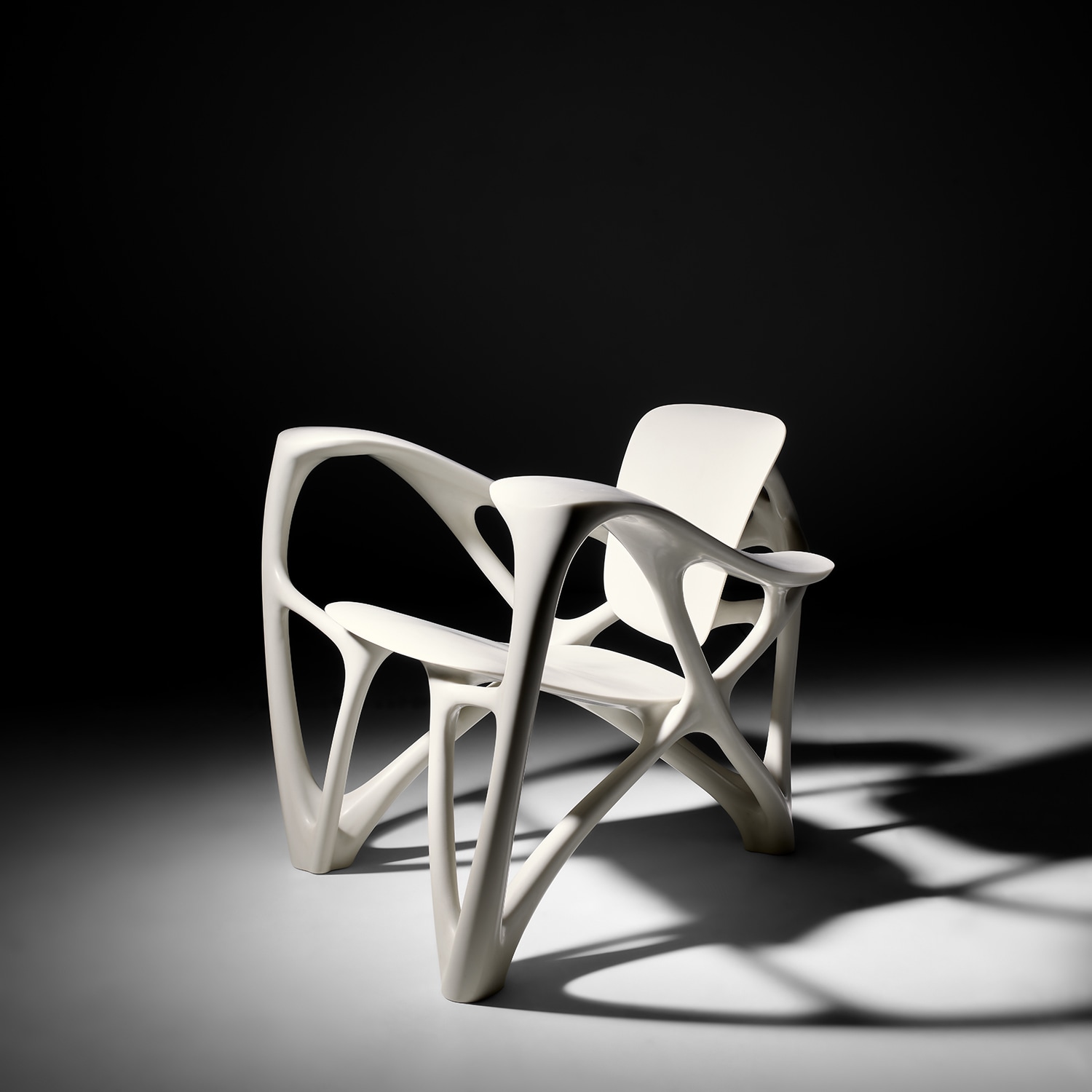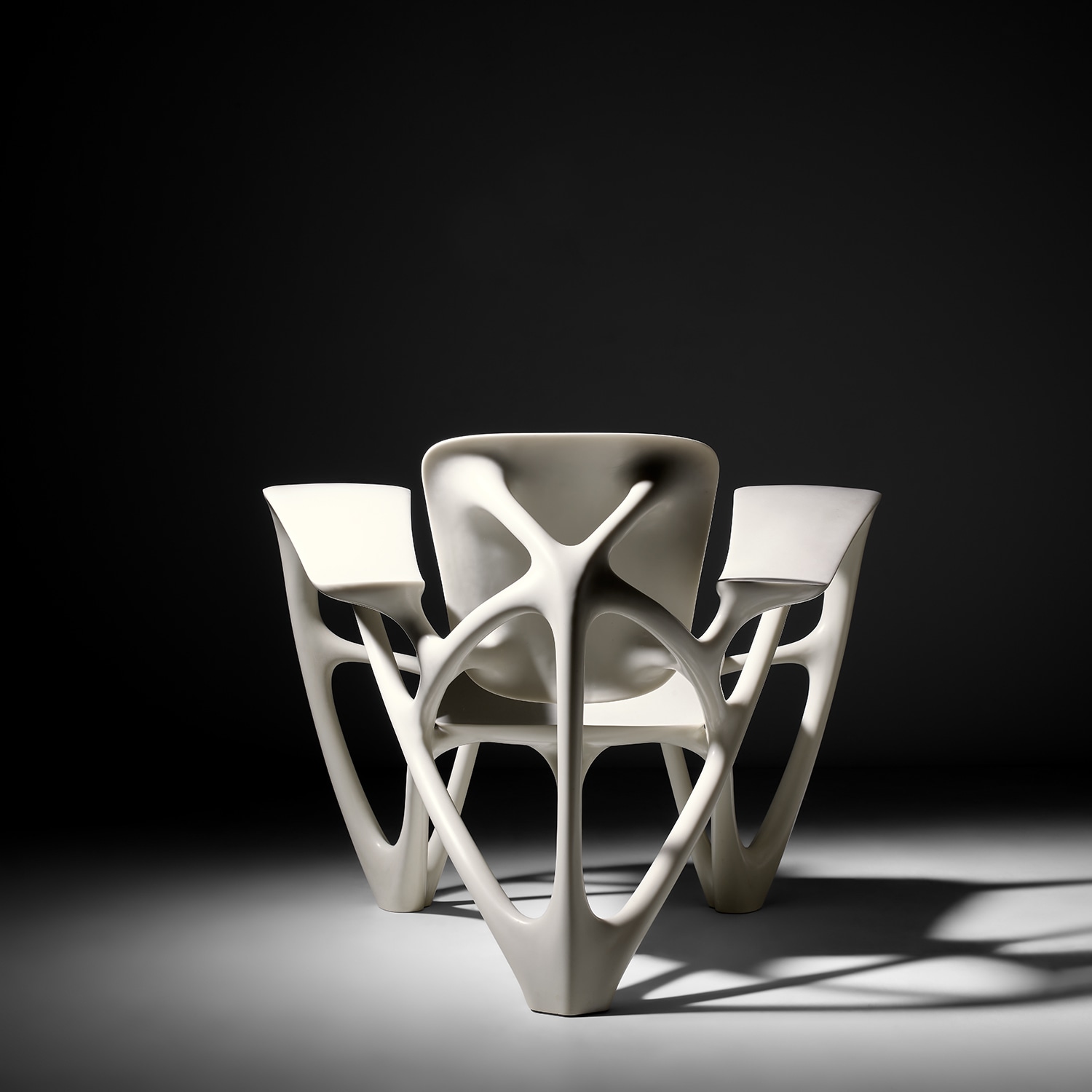







PROPERTY FROM AN IMPORTANT EUROPEAN COLLECTION
55
Joris Laarman
'Bone' armchair
2007
Carrara marble, casting resin.
73.4 x 100.2 x 77.7 cm (28 7/8 x 39 1/2 x 30 5/8 in.)
Produced by Joris Laarman Lab, Amsterdam, the Netherlands. Number 2 from the edition of 12 plus 3 artist's proofs and 1 prototype. Underside impressed with facsimile signature Joris Laarman and 2/12.